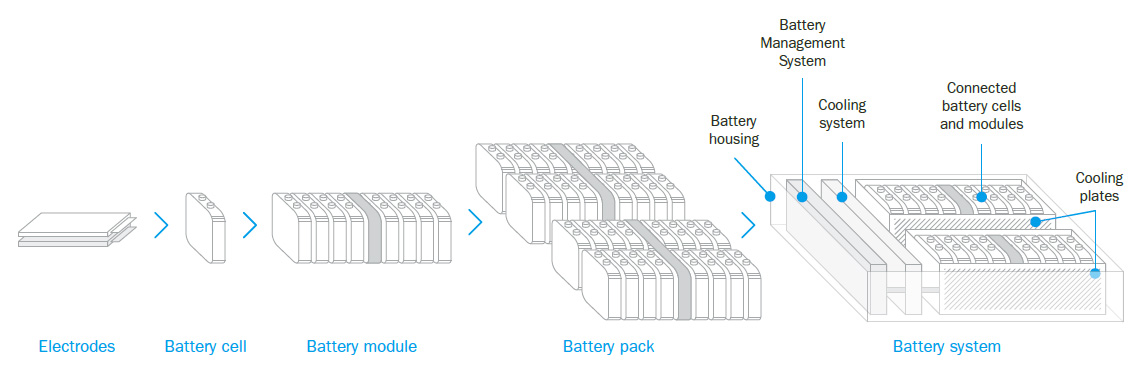Introduction
The manufacture of EV battery systems is based on four essential components: Battery electrodes are used to manufacture individual cells; cells are assembled into battery modules; battery modules are incorporated into battery packs; battery packs are built into battery systems. These provide crash protection, cooling, management and the connectivity to the vehicle.

Figure 1. An EV battery system comprises four main elements.
One of the main challenges for manufacturers of battery modules is the current lack of standardization for EV battery systems within the automotive industry. Not only does each manufacturer require a different design to suit their vehicle platform, the battery modules may have to accommodate three different types of cell: pouch, cylindrical or prismatic.
This means that battery module manufacturers need materials that combine heat resistance, sustainability, processability and high strength with the flexibility to adapt readily to suit changing design needs. While aluminum or low-alloy steel were the original choices, there is a growing market recognition that stainless steels offer major advantages in this application, including:
- Superior heat resistance in case of fire up to 1250 °C
- Ultra-high strength for improved crash safety
- Ultra-high strength for lightweight engineering and design
- Easy processability enabling complex forms
- Optimized total cost of ownership (TCO)
- Completely non-magnetic grades helping to meet strict EMC standards
Outokumpu’s automotive experts have written a guide that provides the designers of battery systems detailed information about the benefits of stainless steels for battery casings. You can download the guide from the link below.
